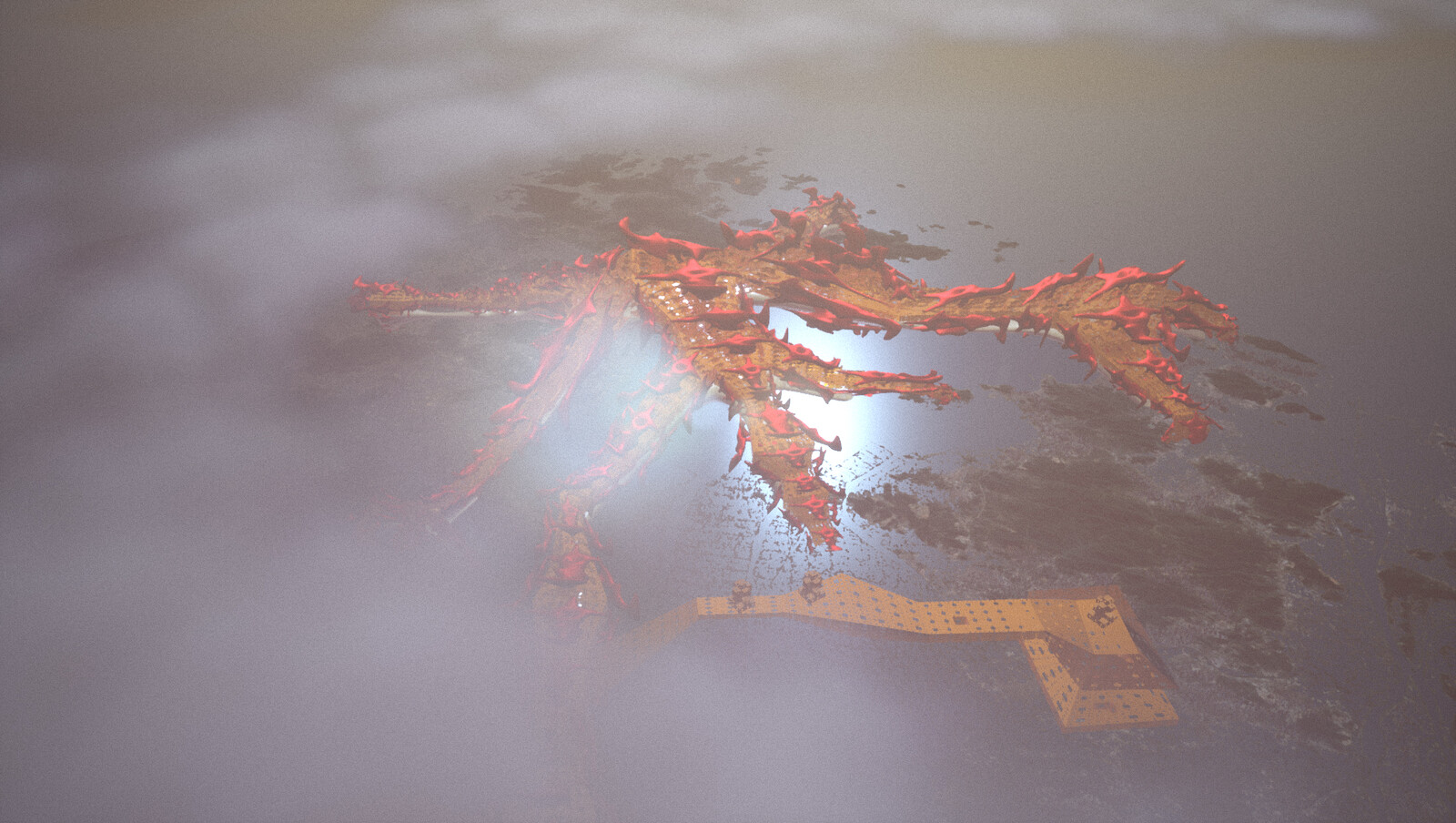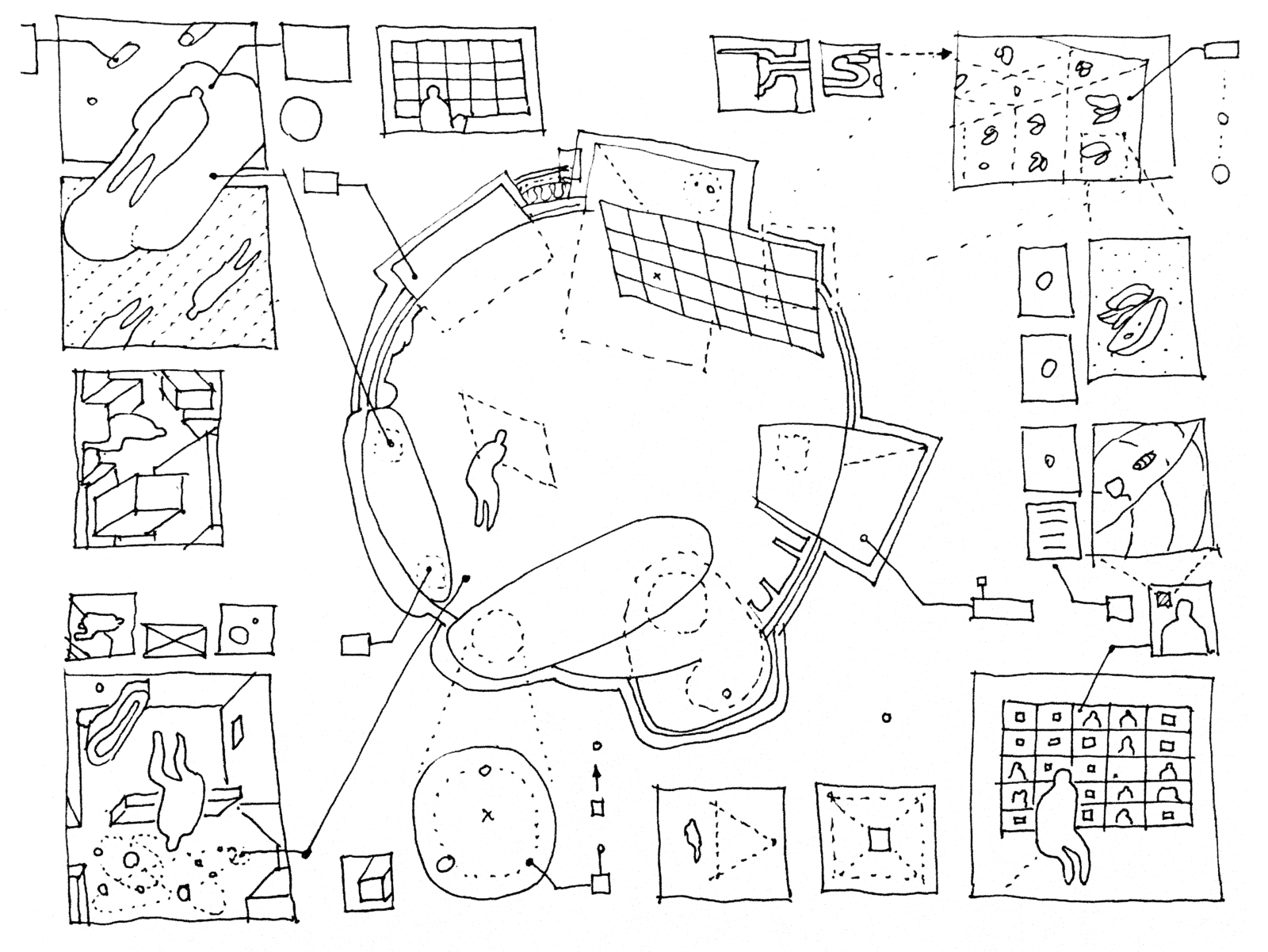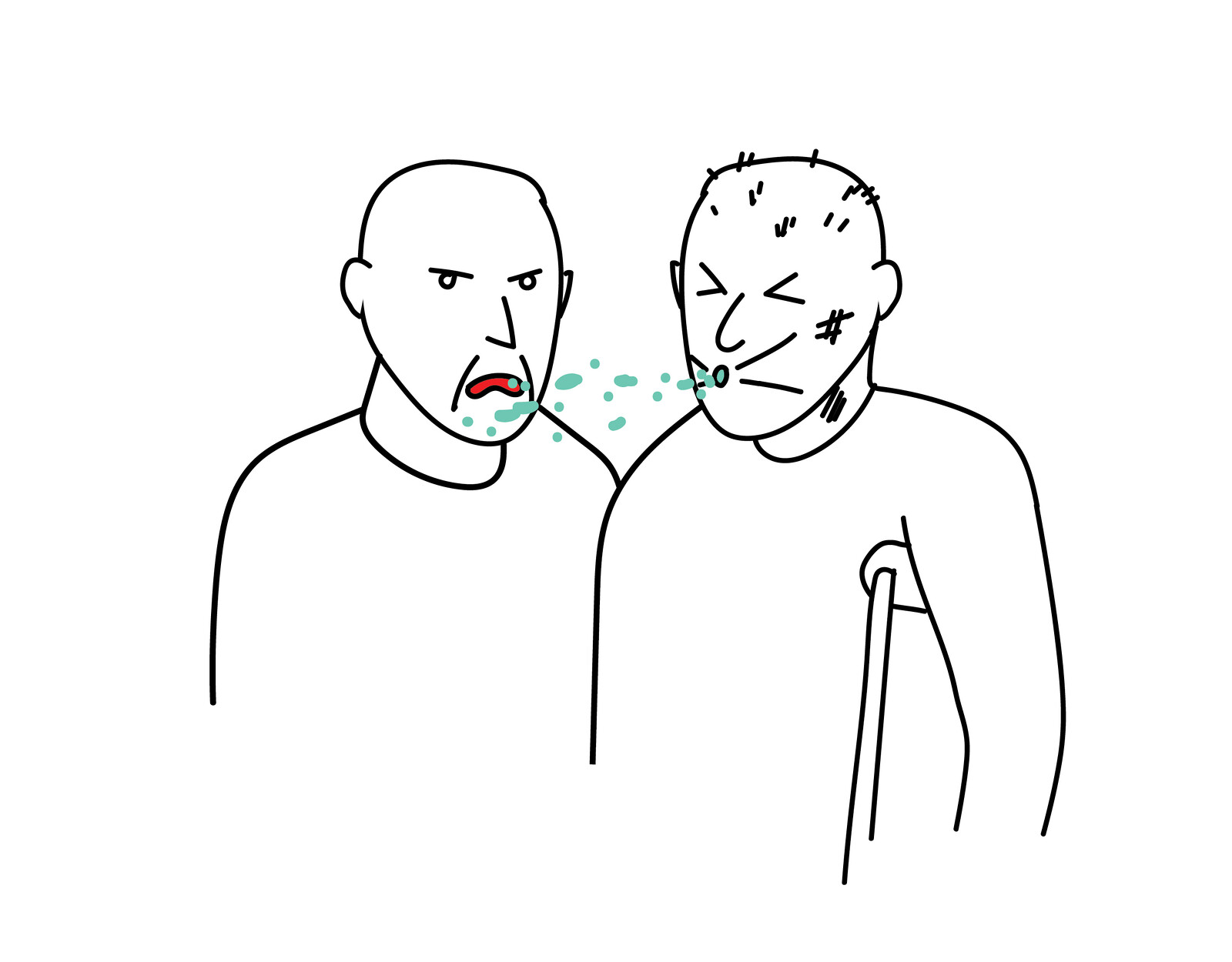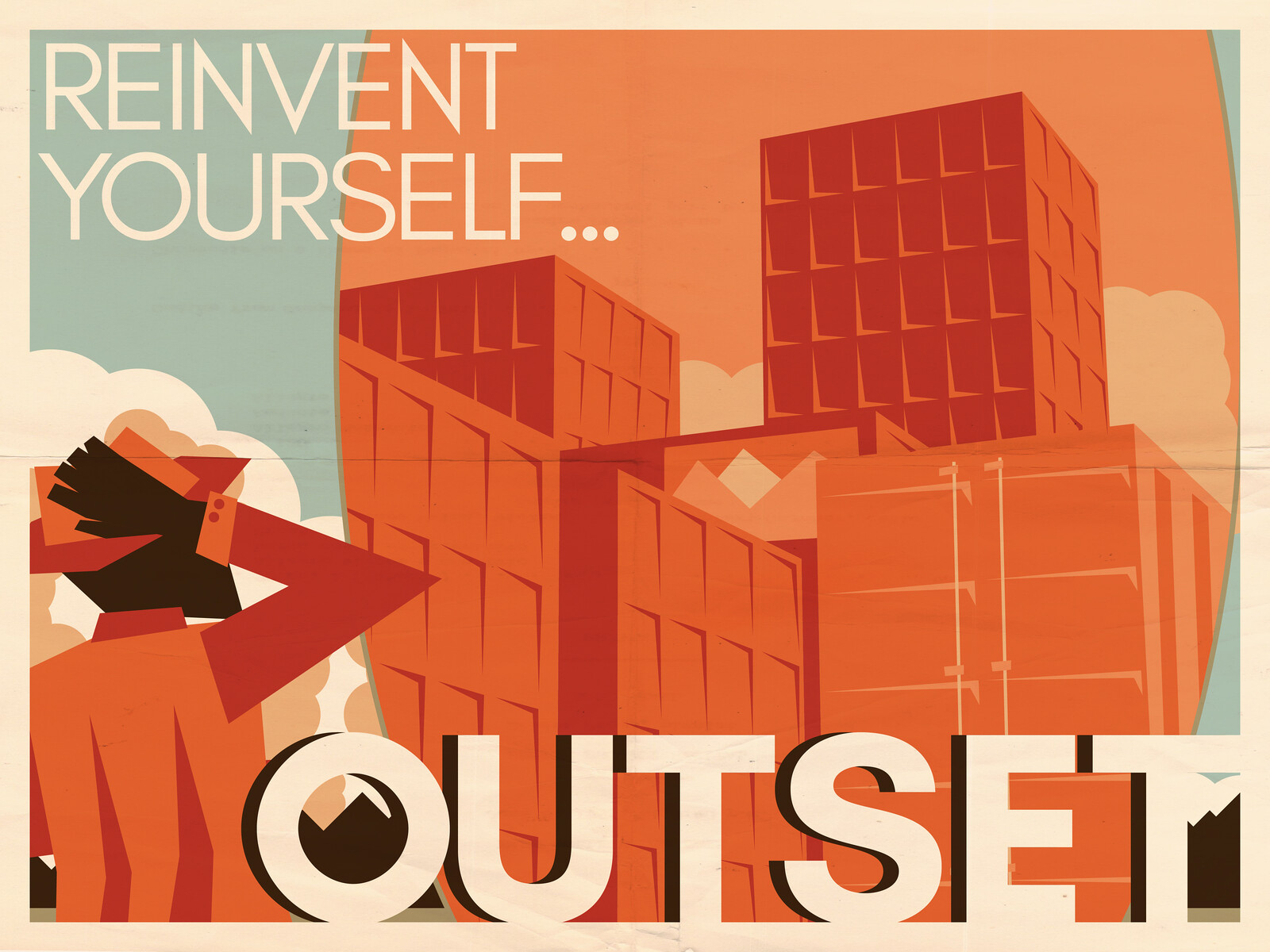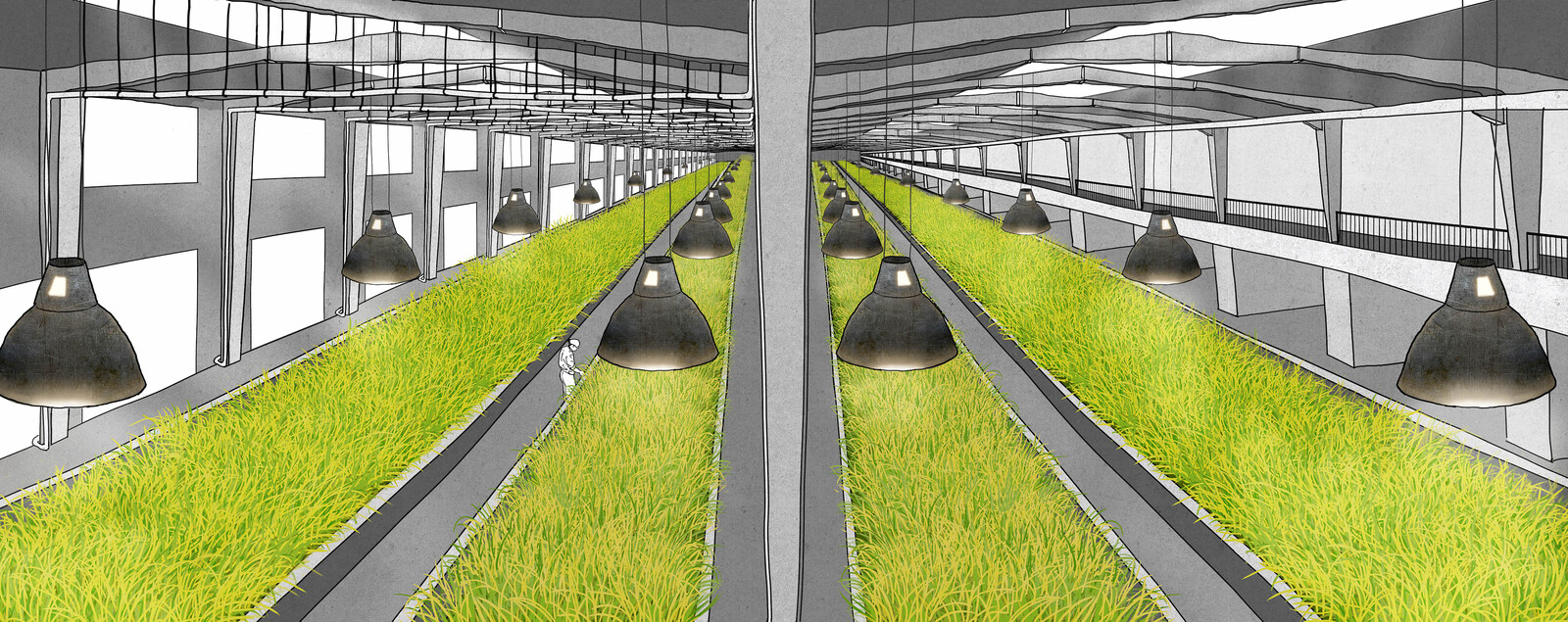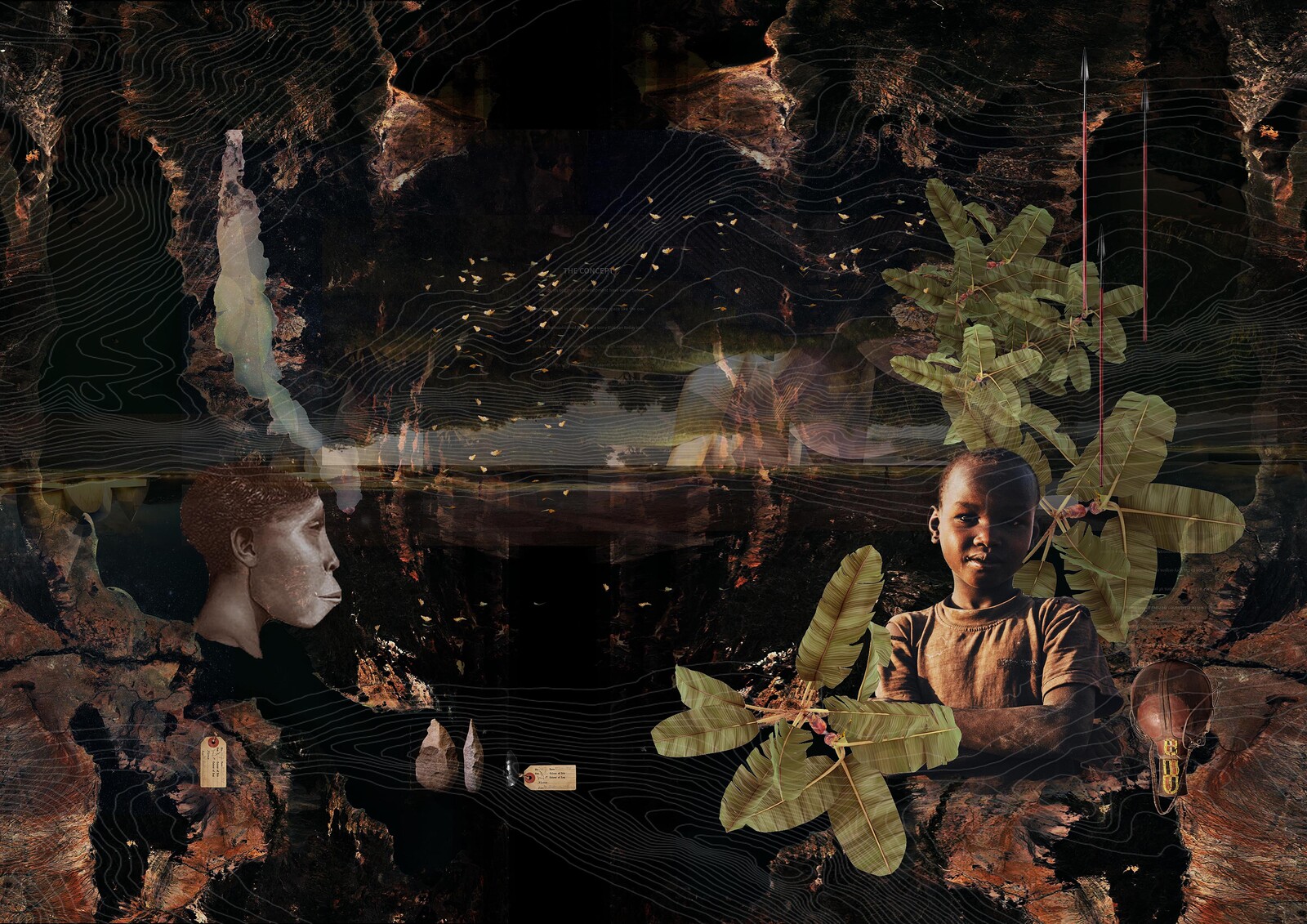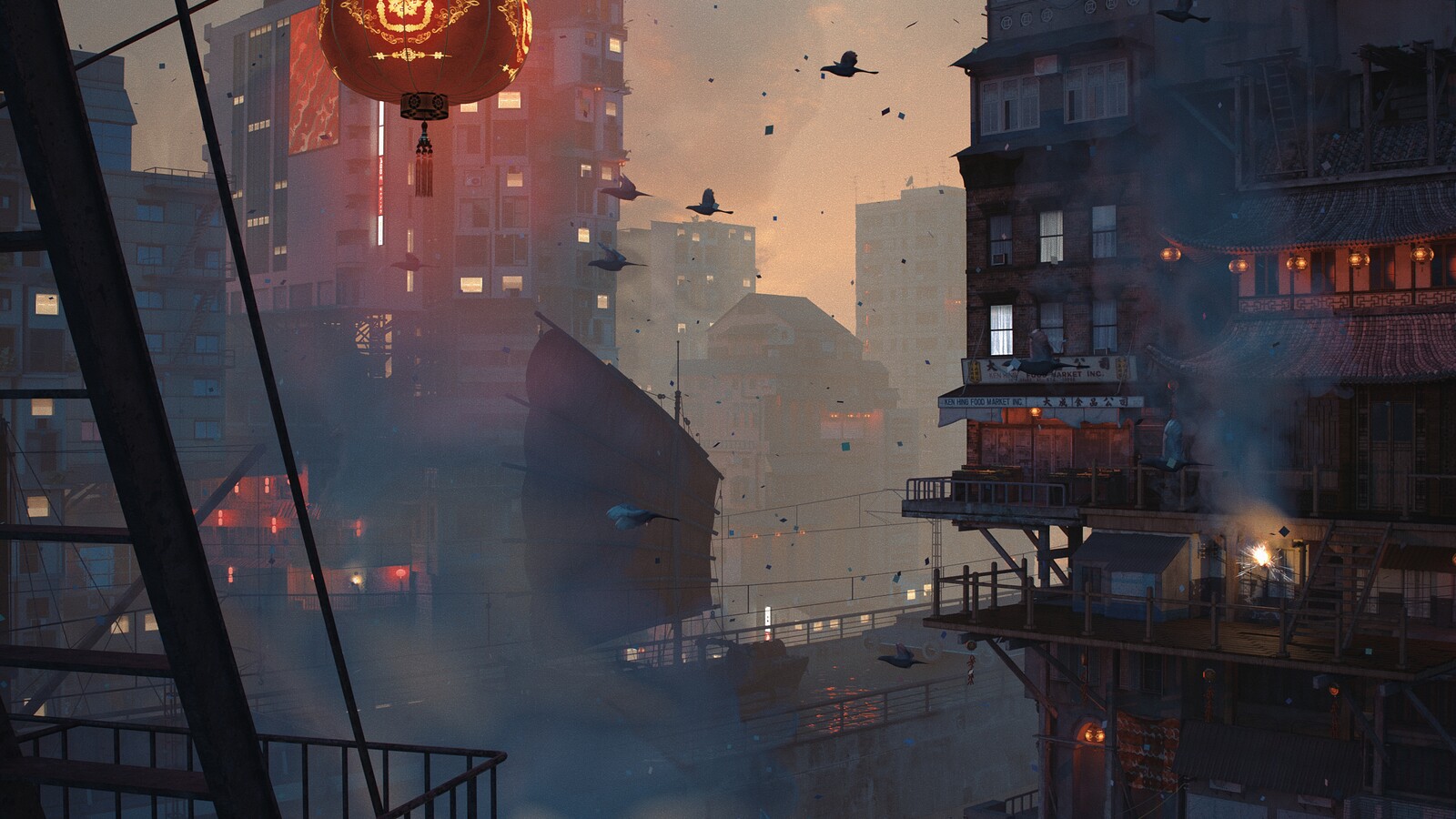When the Contagion reached Hong Kong in 1997, Philip Tose traveled to 2047 to take a lump sum loan from himself. Most people blamed the magnitude of the economic crisis on the flame-out of his notorious investment company—Peregrine—which he had shepherded for a decade through a combination of what his rivals bitterly called senseless and aggressive investment. Indeed, Peregrine had underwrote several Asian markets with atrocious human rights records (Myanmar and Vietnam, for instance) and flagrantly found its political allies in post-Tiananmen China. When asked about their opinion on the latter events, Tose’s partner called them mere “hiccups,” an opportunity to ride the wave of depression.
Tose himself didn’t see any of his decisions, by any measure, as irrational; even the fact that he risked almost a quarter of the company’s entire net worth in the poorly named Indonesian taxi company Steady Safe. The up and coming cab-ride business had checked all the boxes of Peregrine’s investment strategy, including clientelistic ties with the daughter of the Indonasian president.
Some even mentioned that the IMF bailout of Mexican financial institutions (and their foreign shareholders) a few years back gave in to the illusion of unbounded security for these Asian firms. In Tose’s case, more specifically, after the several injuries he endured smashing his racing car into barriers, no venture was too risky. This had got to his head, according to the press, in later years with his absurd investment strategy and perilous underwriting of high-yielding Asian junk bonds. And if, by the slightest chance, the Contagion would knock on his door, he would rest assured that one of his several formidable white knights would come to rescue. But when it did, that is not what happened. The Chinese abandoned them (and were even offended by the mere proposition), and the Swiss dropped out at the very last minute as more documents revealed the extent of their bankruptcy. As everyone lost their trust in his success story, the only person who would still have faith in him was the elderly Tose, potentially alive in 2047.
The plan was to drive with his Lotus Esprit to the future. At the time, only a few private time travel agencies were in practice, and only a handful of glitterati could afford the extortionate costs of traveling across time. He had to act quickly, before his partners noticed that the scant remaining deposit in their account was liquidated. All the pieces had to be put in place: a wormhole tunnel had to be booked in advance, his car’s trunk had to be loaded, and he had to make sure no paparazzi was chasing him—a nearly impossible task, as the city’s business community was throwing him further under the bus with each headline.
The wormhole passage was historically located at the Shek Kip Mei estate in Northern Kowloon, the first public housing estate built by the colonial government in 1953. The estate was an iconic site for Hong Kong’s story of modernization. As the legend went, on Christmas Eve in 1953, a fire devastated the Shek Kip Mei squatter settlement, leaving 50,000 Chinese squatters without shelter overnight. The sensational story triggered a quick response from the British colonial government, leading to the extraordinary construction of more than a million social housing units in the next half a century. A colony hailed as the earliest free-market utopia on earth, by 1986, 45% of its population was housed in social housing buildings provided by the government.
When Tose approached the property in 1997, the original estate had already been demolished and was being rebuilt as generic modern buildings. In the interim, however, Shek Kip Mei had become a ghost town, stark in contrast with Hong Kong’s loud and vibrant atmosphere. The government had used this interregnum to make a few pennies, renting out the property to blockbuster productions. Why not exploit America’s growing fetish for Hong Kong’s dense skyline? Through the windshield, Tose noticed a production crew carrying C-stands and heavy sandbags to the top floor penthouse of one of the new towers. The movie, he would later learn, was Skyscraper, a lackluster copy of Die Hard starring the young Dwayne Johnson. Another blaze-in-the-building movie representing the city’s financial hazard and phobia of entrapment in these vertical environments.
Before anyone could notice, Tose eased his car into the parking lot under the tower. The spiral invited him in. The fluorescent arrow signs started to fade away, and he lost count of how many ramps he had traversed in the pitch-black of the tunnel. He wished upon his return that he could leave all this behind. He’d be more prudent with his investment strategy—no more Jakarta, no more Vietnam. Or at least that’s what he’d tell the shareholders. The squealing sound of his tires was the only sign corroborating his descent.
The arrows appeared again. He felt the steep slope under the car start gradually ascending. He was in 2047, and anxious about encountering the city after the “real” handover. When his Lotus Esprit emerged from the parking lot, the first thing that caught his eyes was the tower’s shadow stretching all the way to the horizon, as if backlit by a low-angled sun. He looked up to find in place of the building one of the numerous legs of a blob structure, standing high in the sky, with each branch stretching in multiple directions and casting a marble-patterned shadow over the city.
A golden plaque installed on the ex-tower—the colossal column—provided a clue: “Pillar 78A, The Space of Flows (finished 2046).” Below, it continued, “The largest social housing estate extended across the Pearl River mega-city, providing affordable housing to citizens from Guangzhou to Shenzhen, to Hong Kong and Macau.” Tose recalled the Greater Bay Area project, but he didn’t expect it to turn out this way. How did they build a continent-wide spider in the sky in the span of fifty years? The housing shortage must have exacerbated during this time. The government’s proposal to build artificial islands off the coast of Lantau—to conjure up vacant land allocated to public housing—must have fallen behind.
The Pearl Megalopolis was an entirely new form of human settlement: a functionally networked constellation of more than fifty cities and towns. Before, Hong Kong had been the storefront to the factory of mainland China. But the megacity was more of a self-sustaining complex: division-of-labor-2.0, with each city fully calibrated to pursue its strongest suit. Hong Kong kept its standing as the financial node of the Greater city, and Shenzhen had remained the science and tech front.
Has this helped with the overall welfare of the citizens? At a glance, the traffic was reduced to that of a suburban German town. A great load of traveling across the city was carried through the blob’s transport tunnels, which flashed like meteors in the sky. The spruced-up lightshow program—Tose’s entrepreneurial brain calculated instantly—would attract a whole slew of tourists. He had to do a little bit of investigation to find his older self, though he was certain that in this day and age, accessing real-time geolocation would be as easy as pressing a couple push-buttons on your phone. Surely, however, his Nokia 3110 wouldn’t help. A bustling McDonalds down the street caught his eye. He parked his conspicuous car in the shadow of pillar 78A as he’d been advised by the travel agent to avoid any unwanted attention. Past travelers were rare sightings in 2047, and a general atmosphere of past-phobia had pervaded the society.
The mood inside the McDonalds was familiar. Some heads laid on the tables, sleeping, and a few glued to the TV screen swiveling in the corner. Tose managed to slip in while avoiding eye contact. The reporter on the screen was standing in front of a glass tower enfolded in triangular frameworks, with separate long queues coiled around the block. The building, he recognized immediately, was the Bank of China. Assessing the dining area for an empty seat, he found one at a shared table with a man and his trolley. The social housing blob clearly hadn’t subsided the number of people who took sanctuary at McDonalds overnight. Distracted, the McRefugee slid his trolley to make space for him. The headline at the bottom of the TV read, “Economist attempting to relocate to the past.” Tose whispered in his companion’s ear, “What is happening at the BOC?,” recognizing that he couldn’t decipher the idiosyncrasies of this era all by himself.
“Past traveler?” The man replied, still glued to the screen. “I’m not past-phobic, don’t worry.” He grabbed a tangerine from his bag and started peeling it on the table. “This is the Central Time Travel Agency, CTTA as they call it. Bank of China was repurposed during the real handover to house CTTA. Time travel is now centralized. It’s more accessible, since, probably, your time” He gave Tose’s attire a quick scan and placed him in the 1990s.
“Why such a surge in traveling?”
“Why travel yourself? Bad investment? The Contagion? You started it! Now everyone is forced to travel to the future to borrow from themselves. There’s very little cash stored in the Monetary Authority. People go to the CTTA to get their time passports stamped before their journeys, but of course the Untrustworthy, the ones who have low credit scores, are ineligible to obtain a passport.” He looked rather untrustworthy himself, Tose thought. “As I know from my cousins, they really make it hell for you to travel, some twisted radical bureaucracy. Every time an economist forecasts a near catastrophic time bubble from his glass office in Central, CTTA cranks up the steps you have to maneuver to get your documents authorized. The whole process is a nightmare. But let’s be honest, people crave the travel high. Why would you get on a plane to go to Paris if you can drive your car down to 2097?”
Tose didn’t know which one is a more impressive achievement for the Chinese government, The Space of Flows—the hulking public housing creature floating in the stratosphere—or the Centralized Time Travel Agency. Surely both libertarian and democratic voices remained on the political spectrum that opposed this degree of speculative regulation, he thought to himself. But public access to future resources was nothing less than extraordinary. “So what’s the news about?” Tose asked the man, now carefully separating the tangerine segments. “Some crazy old man wants to go back in time. Unprecedented. No one has traveled back since the CTTA’s inauguration. Absolute waste of money. Also, doctors say it has adverse effects on the body.”
Tose grabbed a sight of the said man on the screen. “Milton Friedman?!” He was standing all alone in an empty queue, marked by red velvet barriers on both sides, obstinately avoiding the cameras. His small build, nevertheless, didn’t escape Tose, besides his casually unbuttoned short-sleeve dress shirt, overcompensating for his academic status. “Mr. Friedman, you’re a man of reason. Could you please explain to the people watching from home your thinking process behind this regressive decision?” Visibly irritated, Friedman turned to the reporter, “Regressive? I built the bulk of my economic theory in the 1970s around Hong Kong as a free market utopia. I truly believed that Hong Kong’s economic freedom would lead to socio-cultural freedom. It used to set an example for the rest of the world. This was the reason behind seeking asylum in the future Hong Kong from the atrocious regulations in America at the time. But this?! I’d rather spend my retirement in the prospering Hong Kong of 1947, now that, unfortunately, America is no longer an option for me.”
“How about retiring in hell Milton?” Someone shouted from behind the cameraman, and others followed. The camera panned to reveal a masked group of protestors. “Collective Ownership of the future,” read the scribbles on their cardboard signs. “And who are these fellows?” Tose felt that he was losing the thread of events. “Rating activists,” said the man, with a twinkle in his eyes. “Young people who understand the credit system is corrupt, that it doesn’t work if you’re the only one who trusts yourself. They’ve been infiltrating the future to build support networks for each other and the Untrustworthy there. It’s a shame that they’re massively targeted and persecuted by the police, but their work is appreciated by the elderly who’ve gone through a lifelong of credit-seeking fatigue.” Tose sensed an ever slight passive-aggressive tone in his companion’s voice, who must have known of his privileged access to time travel. Naturally, Tose wouldn’t desire any degree of chrono-socialism. Where he came from, these conversations had only recently begun, and he was hoping they wouldn’t find much traction. He only had one lifetime to save and that was it. Time was of essence.
It must have been divine intervention that he recognized a man, clearly sharing his physiognomy—though with scarified hair—and older, much older, standing in one of the queues behind the protestors. He grabbed a business card from his pocket and held it over the tangerine peels, “If you ever…” “You could’ve paid for my lunch,” the man took the card and dropped it near the pile of fruit waste.
Tose was already rushing back to his car. He could put up with the past-phobic slurs and electronic car honks if driving was the quickest way to get to the CTTA. Though the streets were unrecognizable, the underside of the Space of Flows was essentially a live street map projection, guiding him in no time to his destination. He dumped his car by the Chinese lion statue, an icon of prosperity throttling the globe under his golden paw. Rating activists at this point had formed a line at the front entrance, dissuading others to cross the human barricade. The police had started to kettle the picket, and some of the queues had slowed down as people were sporadically stepping out. It was impossible to walk through the swarm of angry youth without making a scene, and in any case, people wouldn’t like it if he jumped the line.
He looked for the VIP queue, where the visibly vexed faces of the highly-trustworthy were telling of their disapproval for the cause. The old Tose was there, third in line, not as doddering as he had envisioned. A chant began, building to a crescendo “Free time travel for all.” Within a second battens came out and started raining on protestors. Very much in character, Tose took advantage of the chaos to force his way through the storm of bodies.
“Why did you make it so hard to get to you?” He finally locked eyes with the old Tose, crossing the unnecessarily theatrical velvet barriers. “I’m not your father, you know, catering to all your needs.” The old man reached into his pocket to grab a stack of cash. Even the pack of credible arrogants nearby couldn’t ignore the sight of one trillion US Dollars. “Here, your mess multiplied by the chronological exchange rate of fifty years.” Patronizing, in fact, just like their father. Was it normal, Tose wondered to himself, that after half a century, his interest hadn’t changed at all? He had previously fantasized about the old Tose refusing to save his skin. The ease with which he gave him what he came for was somewhat disappointing. After all this time, he was still interested in the same thing: his self-interest. “Now let this old man tend to his travel logistics to be able to feed your insatiable needs.” The old Tose turned his back. Was it need, really, or desire?
When Tose found himself in an open space, clamor from the crowd was subsiding. Flocks of protestors were taken by police caravans, sirening away. Friedman walked out with his freshly inked passport. “Mr. Friedman!” Tose tried to get his attention. “I can drop you off by ‘47 if you’re heading that way. I’m a great fan” After a swift and shallow assessment of Tose and his car, Friedman jumped in. “I can’t bother with booking a ride now.”
The sun was setting as they drove down the empty streets of the Pearl megalopolis. Most Untrustworthies were just getting off work and lodging themselves in massive elevators to be flushed through the transport tunnels towards Shenzhen and Guangzhou. Evening golf games were underway. For years, people had wondered why the information age hadn’t allowed further decentralization into rural areas from the city centers. When would the interface finally replace face-to-face? If anything, the megalopolis now was a mission control center for the entire network. Fearful of cyber-surveillance, businessmen still preferred to have their clandestine meetings on golf courses, or over exclusive lunch meetings. Tradition never graduates.
“The delusion of planning, intervening in time and property, these are their gifts.” Friedman sighed out, looking up at the spider. “Of course, I share the youth’s feelings.” After all he’d observed, Tose wasn’t sure he agreed with the myth of the colonial government’s “Positive non-interventionism.” Even in 2047, the British had never left and the PRC had always been there; literally through time tunnels, but also in massive industrial planning projects, social housing infrastructures, and the Chinese money pumped into the peninsula’s lucrative property market. Where Tose came from, the enterprise was relatively free because so much active state policy was put in place. The British did this because they had to, not because they wanted to. With the mid-century surge of migration from the mainland, however, food, land shortage, and the hygiene crisis took its toll on the economy. Need, not desire.
Tose remembered Thatcher’s ominous smile in the morning news before he left the house: “The eyes of the world are now watching you,” she said, speaking indirectly to Deng Xiaoping. “The eyes of the world,” Thatcher said like a prophet, fully aware of the longevity of their colonial legacy. As an entrepreneur, Tose was wise to the fact that his wild stake ventures were enabled because government took the edge off his risky investments, though they’d also abandoned him in extremis. He deliberated opening the conversation with his passenger, but didn’t dare to argue with the sulky economist, who was now wiping his forehead with an embroidered handkerchief, displaced in every sense of the word.
“A businessman on his special privileged holiday?” Friedman seemed to have read Tose’s mind. “I always said intellectuals and businessmen are enemies of the free society,” Friedman continued. “Intellectuals, well, they want freedom only for themselves. Businessmen though, they do want freedom for everybody else, but they want more freedom for themselves.” Tose remembered something similar he had once heard, perhaps in a completely different context: “The function of freedom is to free someone else.” Again, he dared not to say that aloud in the Nobel laureate’s presence, whose usual goofy smile had vanished.
When they entered the parking lot of 78A, Tose wondered if the film crew was still at Shek Kip Mei. He now knew how the city would transform in the next fifty years, and he was aware of his own involvement in it. With the beginning of the real-estate boom and the developer monopoly, property would become Hong Kong’s national sport. Hong Kong’s wormhole was marked by these fifty-year intervals. 2047 was directly connected to 1997 and the 1947 migrations, the squats and the fires. A recursive loop packed with apparitions and premonitions. A contractual unconscious.
After all these fires, it was now time for water. Not liquidity, but water. For property entering the Space of Flows. “Be water my…” was the last thing the economist said before opening the door in the dark of the spiral ramp and softly hopping out of sight. Once he re-emerged back to the top of the ramp, Tose turned the car on a dime towards home. That night he could finally sleep in peace.
Cascades is a collaboration between MAAT - Museum of Art, Architecture and Technology and e-flux Architecture.
